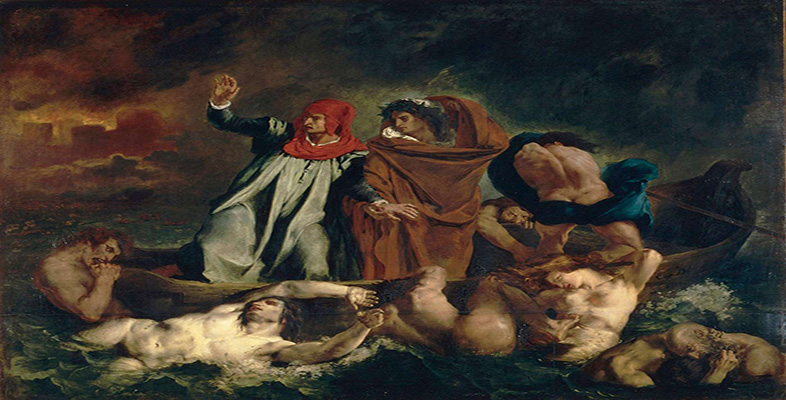5.2 Sardanapalus – passion and futility
For many of Delacroix’s Romantic contemporaries, versed in Byronic despondency and melancholic ruminations on the futility and transitory nature of worldly pleasure, Sardanapalus expressed the condition of ennui, (melancholy or listlessness) – a kind of inner emptiness, languor, stultification and world-weariness. (The term ennui had been used in medieval French to signify profound sadness, disgust and personal anguish from the seventeenth century onwards it was used to describe a vaguer, less powerful form of melancholy or listlessness. SeeLe Robert, 2000, vol.I, p.745.) When painting his later Liberty Leading the People (Plate 29), which is discussed further below, Delacroix admitted that the hard work he did on it banished his ‘spleen’, another word used by the Romantics to suggest a lack of interest in life, or melancholy humour (see Johnson, 1981, p.130). (The word ‘spleen’ had been borrowed form English and was used by French writers from the eighteenth century onwards. It carried associations with the black humours or bile created by the bodily organ of the same name, attributed by the ancients with the power to create illness and melancholy. Like Faust, the artist fought against inertia and the temptations of nihilism. He confessed, in a journal entry of May 1824, that he needed to abandon reason and stir up his mind in order to satisfy its ‘black depth’. We might almost see Sardanapalus as reinforcing a Rousseauesque diatribe against luxury or acquisitiveness. While many Enlightenment thinkers (including Voltaire) had seen luxury as a sign of advanced civilisation, Rousseau had regarded it as a symbol of moral and social corruption and had urged a return to more natural, primitive values. In Byron's play, Sardanapalus refers to the prospect of being ‘purified by death from some/Of the gross stains of too material being’ (Gordon, 1970, p.491). We are reminded, also, of William Wilberforce’s criticism of ‘rapacity … venality … sensuality’. Apparently, then, the painting subverts the materialistic impulses behind the Royal Pavilion at Brighton and other sumptuous palaces. Delacroix’s particular Romantic sensibility is expressed as the denial of desire, or the searing realisation of the ultimate inadequacy of the material and the sensuous.
